Now, as a special edition, we're going to create the Natural Presence Volume, a relatively easy project.
This volume control allows the signal from the pickups to be directly input into the amplifier.
Various manufacturers sell it under different names, but the original circuit undoubtedly stems from Yamaha's "Direct Circuit." Although it's an old design, it remains an exceptionally effective circuit.
Let me briefly explain the effect.
The signal from the pickup passes through the selector switch, the volume control to adjust the volume, and then goes to the output jack.
When the signal passes through the volume pot, even with the volume turned all the way up, 5% to 15% of the signal is lost.
It may sound unbelievable, but it's true.
While the overall volume doesn't decrease, the high frequencies are attenuated (actually, the overall volume does decrease, but this is less noticeable than the change in sound quality).
Therefore, this circuit was devised.
It operates like a normal volume control, but when the volume is turned all the way up, the resistance between hot and ground becomes infinite. As a result, the signal from the pickup doesn't deteriorate at all.
It's a truly genius idea that prevents high-frequency degradation—amazing!
I've played guitars mounted with this circuit many times, and the effect is very noticeable and practical.
This time, you only need to buy one component: a 500KΩ A-curve dual-gang potentiometer.
This single component will dramatically change your guitar sound.
Now, here's a simple, and as usual, somewhat messy, hand-drawn circuit diagram...
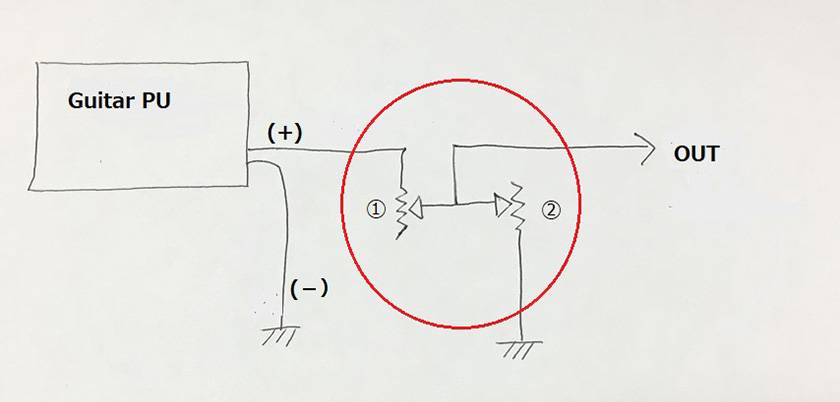
To explain, first, the signal from the pickup (PU) is input into the 3rd terminal of the dual-gang potentiometer.
Then it is output from the middle 2nd terminal and directed towards the output.
However, the signal going towards the output is also connected to the other 2nd terminal of the dual-gang potentiometer, and the 1st terminal of that potentiometer is grounded. Up to this point, it's the same as a normal volume control.
This circuit, however, requires one more step.
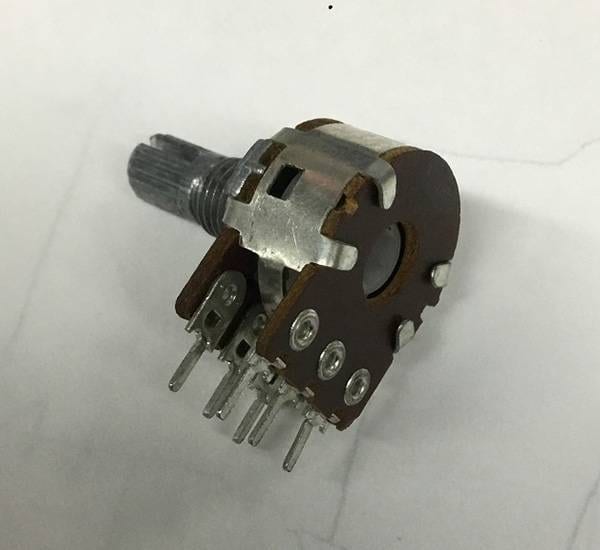
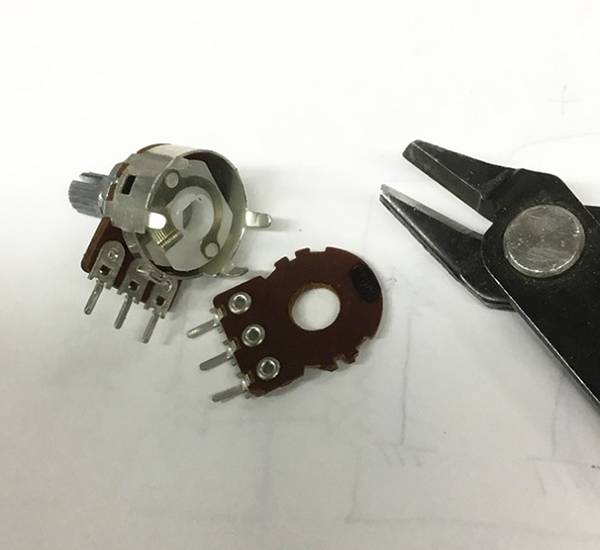
Carefully open the retaining part of the potentiometer with a pair of pliers and remove the resistor element.
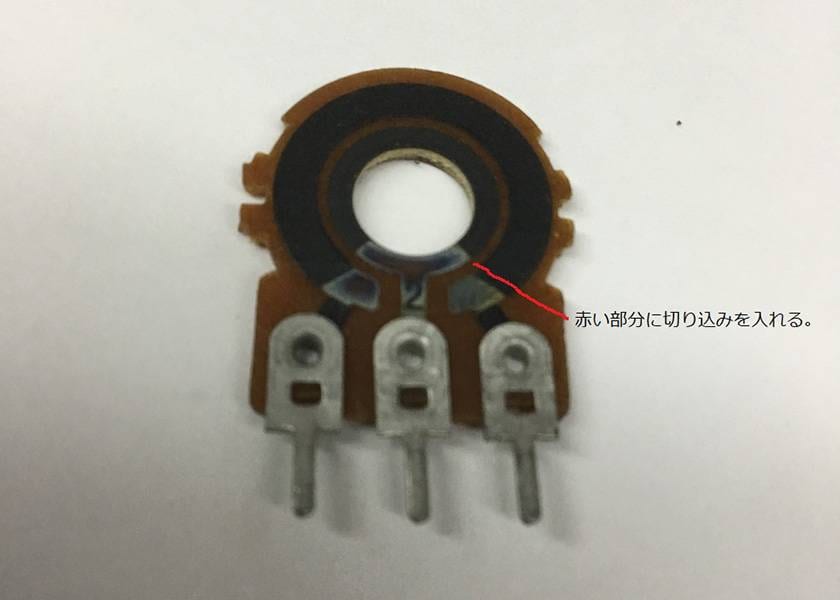
Next, make a cut in the resistor element you removed.
Use a cutter blade to lightly slice the surface.
It's okay as long as the resistor element is not conductive at both ends, but if you press too hard, it might cause a bulge at the cut, which can catch on the terminal.
A light touch is sufficient. After making the cut, reassemble the volume control as it was before.
Here's the wiring diagram.
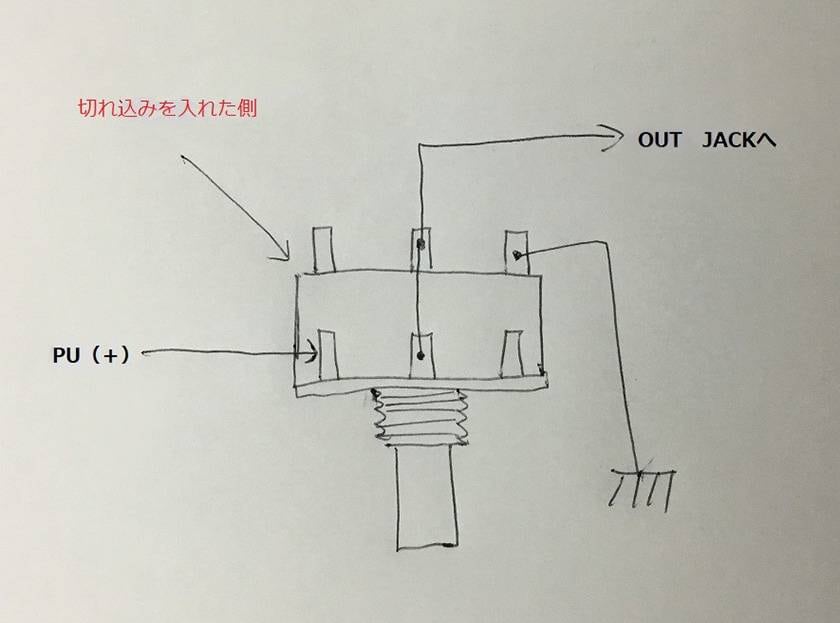
I specified a 500KΩ A-curve pot, but you can use anything from 1MΩ to 250KΩ.
Using a 250KΩ pot with a humbucker pickup can cause a sudden increase in treble and volume when the volume is fully turned up, so it's generally recommended to use 500KΩ for humbuckers and 250KΩ for single coils.
By the way, this modification has little effect on active pickups like EMGs.
These pickups already have low impedance output with minimal signal degradation, producing a naturally present sound from the start.
You can expect sufficient results even with inexpensive pots, so I won't specify a particular manufacturer.
With this, you'll be able to hear the true potential of your guitar's sound for the first time.
Trust me and give it a try.
Even the guitar gods have included a similar circuit in their Strats (seriously!!).
See you next time!!






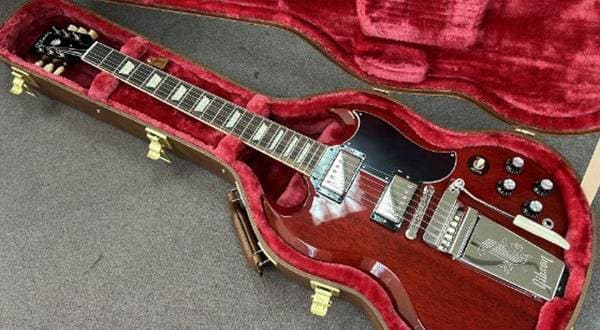

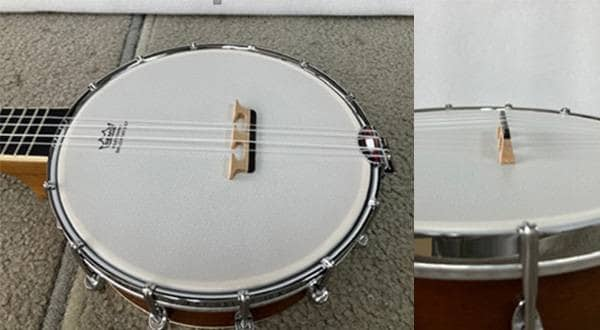

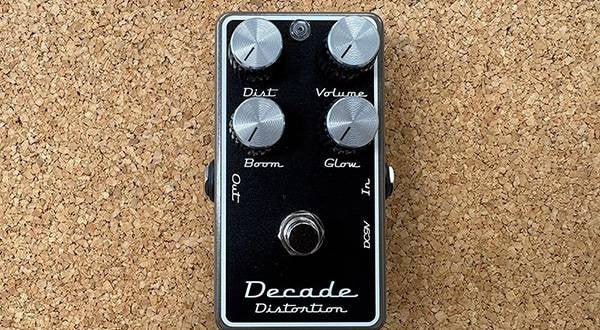
![The Road to Your Complete DIY Equipment: 2nd Edition: The Illusive Vintage Sound! Amplified Buffer Get your hands on the legendary device exclusively used by professionals [Parts]](/contents/uploads/thumbs/2/2023/3/20230303_2_21537_1.jpg)
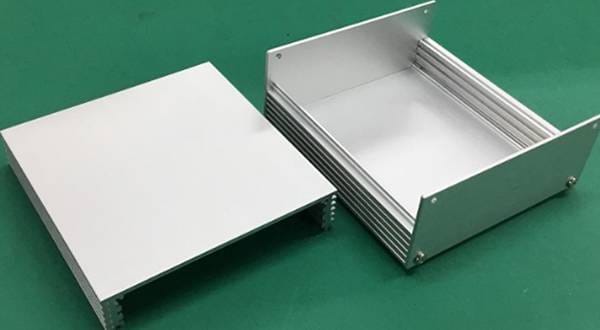
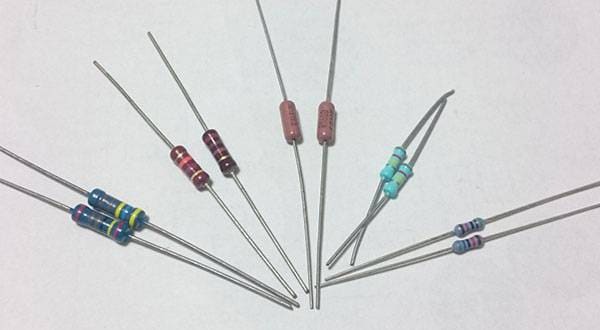
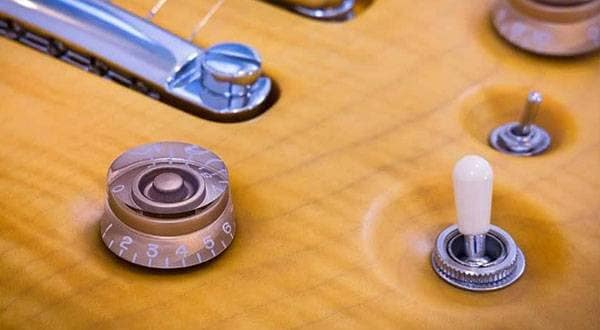
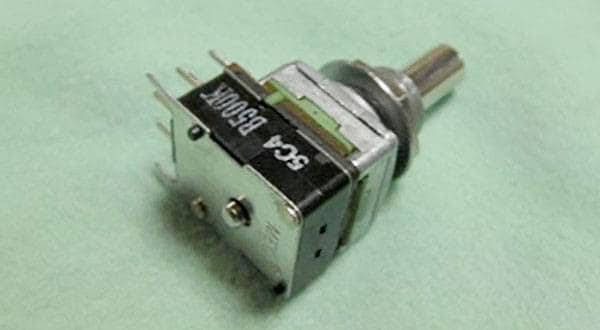
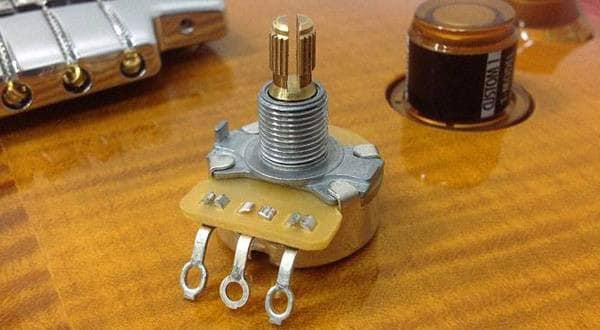
 ギターパーツの沼
ギターパーツの沼
 DIY ギターメンテナンス
DIY ギターメンテナンス
 プレイテックのギターを最強に改造!!
プレイテックのギターを最強に改造!!
 ギターの種類
ギターの種類
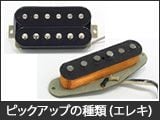 ピックアップの種類(エレキギター)
ピックアップの種類(エレキギター)
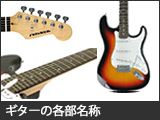 ギターの各部名称
ギターの各部名称















